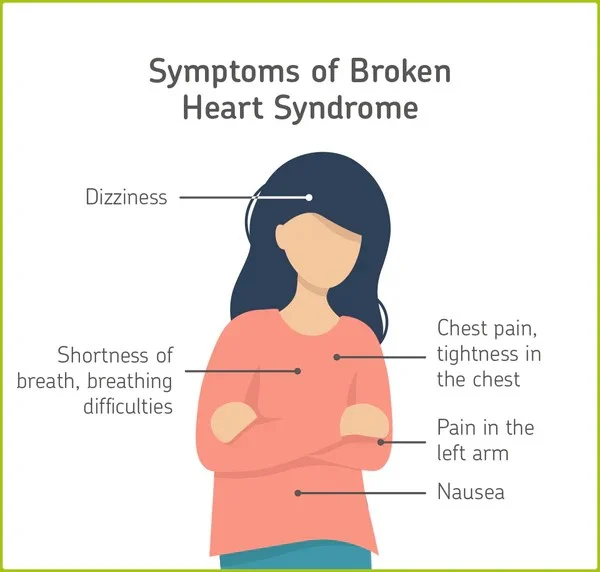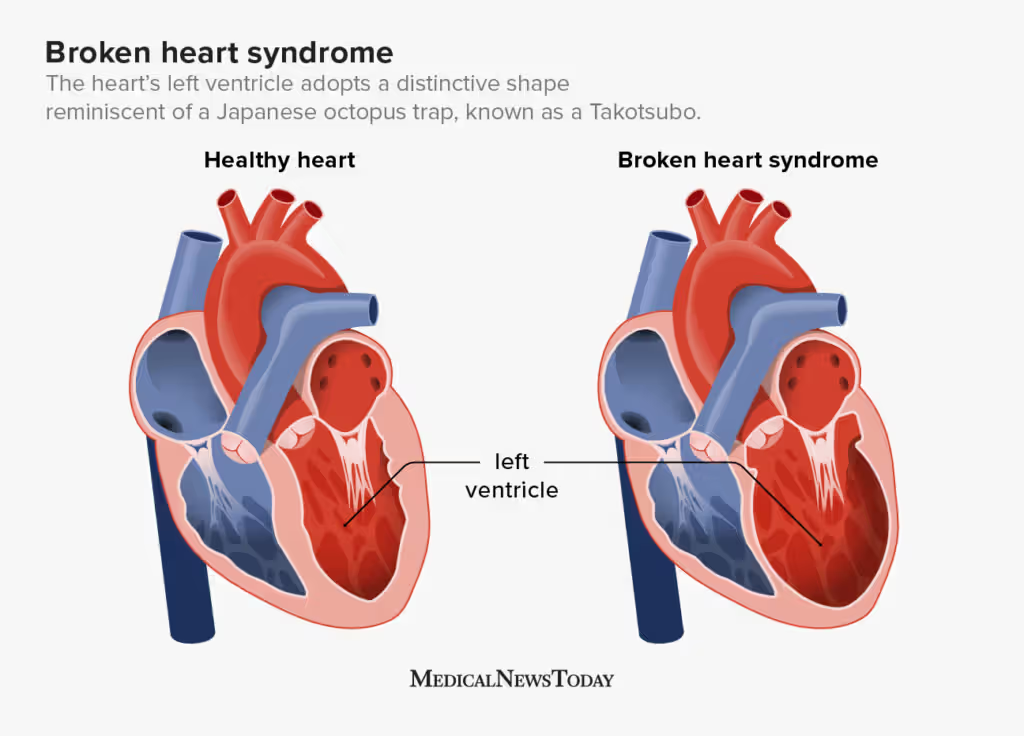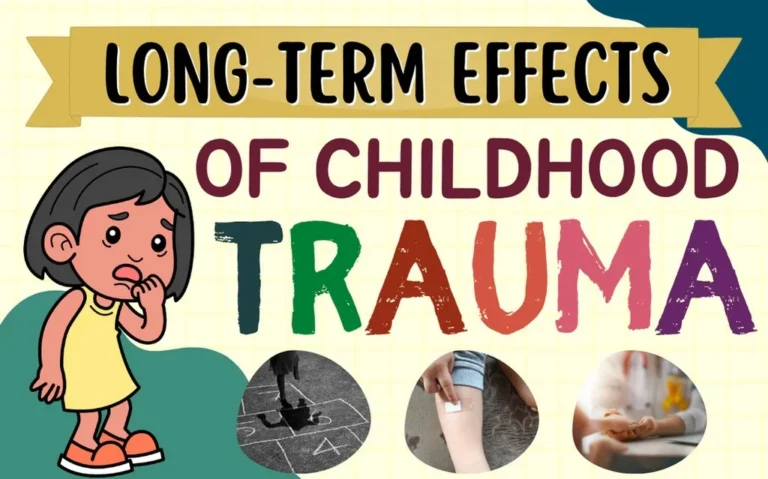Introduction: When Emotional Stress Affects the Heart
Imagine experiencing chest pain so severe you believe you’re having a heart attack, only to discover your arteries are clear and your heart muscle isn’t damaged permanently. This medical mystery has a name: Broken Heart Syndrome. Also known as Takotsubo cardiomyopathy or stress cardiomyopathy, this condition mimics a heart attack but stems from a very different cause—intense emotional or physical stress.
The condition earned its poetic name because it often occurs following extreme emotional distress, such as the death of a loved one, a devastating breakup, or overwhelming grief. What makes this condition particularly intriguing is its disproportionate impact on women, especially those past menopause. This article explores the science behind Broken Heart Syndrome, its unique risks, why women are more susceptible, potential complications, and strategies for prevention and recovery.
What Is Broken Heart Syndrome? Understanding the Condition

Broken Heart Syndrome is a temporary heart condition triggered by extreme stress or intense emotions. Unlike a typical heart attack caused by blocked coronary arteries, this syndrome occurs when a part of the heart temporarily enlarges and doesn’t pump effectively, while the rest of the heart functions normally or with enhanced contractions.
The most distinctive feature appears on imaging tests: the left ventricle (the heart’s main pumping chamber) takes on an unusual shape resembling a Japanese octopus trap called a “takotsubo”—hence its medical name, Takotsubo cardiomyopathy. The heart literally appears ballooned in certain sections, creating a shape reminiscent of a broken heart.
Although symptoms mirror those of a heart attack, including chest pain and shortness of breath, Broken Heart Syndrome differs in several key ways:
- No blocked arteries are present
- No permanent heart damage typically occurs
- Recovery is usually much faster than after a heart attack
- The condition is usually preceded by an emotionally or physically stressful event
Historical Background and Discovery: The Origin Story
Broken Heart Syndrome was first described in Japan in 1990 by Dr. Hikaru Sato and colleagues. They noticed a unique pattern of heart muscle dysfunction in patients who had experienced severe emotional stress, particularly among older women. The peculiar ballooning shape of the affected heart’s left ventricle reminded them of a “takotsubo,” a traditional Japanese octopus trap with a narrow neck and round bottom.
For centuries before its scientific recognition, the concept of dying from a “broken heart” appeared in literature, art, and cultural beliefs worldwide. Medical science has now confirmed that extreme emotional distress can indeed have profound physiological effects on the heart, validating age-old wisdom about the heart-emotion connection.
In Western medicine, the condition gained recognition more slowly, but by the early 2000s, cardiologists worldwide had begun documenting similar cases. Today, Broken Heart Syndrome is recognized as a distinct cardiac condition in medical literature and clinical practice globally.
Prevalence and Demographics: Why Women Face Higher Risk
One of the most striking aspects of Broken Heart Syndrome is its overwhelming preference for women:
- Approximately 90% of reported cases occur in women
- The condition most commonly affects women aged 58-75
- Postmenopausal women have up to five times greater risk than premenopausal women or men of similar age
This stark gender disparity has prompted researchers to investigate how female hormones, particularly estrogen, might protect against or contribute to this condition. The dramatic drop in estrogen after menopause appears to play a significant role in vulnerability.
Recent statistics indicate that Broken Heart Syndrome accounts for approximately 1-2% of suspected heart attacks, with an estimated 6,000-7,000 cases diagnosed annually in the United States alone. However, many experts believe the condition is underdiagnosed due to its similarity to heart attacks and the relatively recent recognition of this syndrome as a distinct entity.
Causes and Triggers: What Breaks the Heart
Broken Heart Syndrome develops when the heart muscle weakens following intense emotional or physical stressors. Common triggers include:
Emotional Triggers
- Death of a loved one
- Devastating breakup or divorce
- Receiving terrible news (diagnosis, job loss)
- Extreme fear or anxiety
- Domestic abuse
- Public speaking or performance anxiety
- Intense arguing
- Surprise celebrations (both positive and negative surprises can trigger it)
Physical Triggers
- Severe pain
- Serious illness or surgery
- Asthma attacks
- High fever
- Low blood sugar
- Stroke
- Significant blood loss
- Certain medications
The Science Behind the Syndrome: Stress Hormones and the Heart
While researchers haven’t pinpointed the exact mechanism behind Broken Heart Syndrome, the leading theory involves stress hormones, particularly adrenaline and noradrenaline (also called epinephrine and norepinephrine).
During intense stress, the body releases a surge of these hormones as part of the “fight-or-flight” response. In Broken Heart Syndrome, this hormone surge appears to temporarily “stun” or overwhelm the heart muscle, particularly the left ventricle, causing:
- Microvascular dysfunction: Small blood vessels in the heart constrict instead of dilate
- Direct cardiac toxicity: High levels of stress hormones may directly damage heart cells
- Coronary artery spasm: Temporary constriction of arteries that supply blood to the heart
Women’s hearts may respond differently to these stress hormones, potentially explaining the gender disparity. The reduced estrogen levels after menopause likely play a role in this vulnerability, as estrogen helps protect blood vessels from the harmful effects of stress hormones.
Recent research has also identified potential genetic factors that may predispose certain individuals to develop this condition, suggesting why some people experience Broken Heart Syndrome while others facing similar stressors do not.
Symptoms: How It Presents

Broken Heart Syndrome often strikes suddenly and without warning. The symptoms closely resemble those of a heart attack, including:
- Intense chest pain (angina)
- Shortness of breath
- Irregular heartbeat (arrhythmias)
- Fainting
- Low blood pressure
- Heart failure symptoms
- Cardiogenic shock (in severe cases)
The similarity to heart attack symptoms explains why medical attention is critical—only proper testing can differentiate between the two conditions.
Diagnosis: Distinguishing from Heart Attack

Because Broken Heart Syndrome mimics a heart attack, diagnosis requires several tests to rule out coronary artery blockages. The diagnostic process typically includes:
- Electrocardiogram (ECG): Shows abnormalities similar to a heart attack
- Blood tests: May show slightly elevated cardiac enzymes, but usually much lower than in a typical heart attack
- Coronary angiography: The definitive test showing normal coronary arteries without blockages
- Echocardiogram: Reveals the distinctive ballooning pattern of the left ventricle
- Cardiac MRI: Helps distinguish from other heart conditions and shows the characteristic ballooning
The presence of a recent emotional or physical stressor, combined with these test results, helps confirm the diagnosis.
Complications: Beyond the Initial Event
While Broken Heart Syndrome is generally considered temporary, it can lead to serious complications in approximately 20% of cases:
- Heart failure: The weakened heart can’t pump enough blood to meet the body’s needs
- Pulmonary edema: Fluid buildup in the lungs
- Cardiogenic shock: A life-threatening condition where the heart suddenly can’t pump enough blood
- Arrhythmias: Irregular heart rhythms that can be dangerous
- Blood clots: The abnormal heart chamber movement can lead to clot formation
- Heart rupture: In extremely rare cases, the heart wall can rupture
Research has also revealed that Broken Heart Syndrome may not be as “temporary” as once thought. Some studies suggest subtle heart abnormalities may persist long after apparent recovery, and the risk of recurrence is approximately 10-15%.
Women with underlying anxiety or depression appear to have higher rates of complications and recurrence, highlighting the importance of addressing both physical and psychological aspects of recovery.
Treatment Approaches: Healing the Broken Heart
The good news is that Broken Heart Syndrome is treatable, with most patients making a full recovery within days to weeks. Treatment approaches include:
Immediate Care
- Hospitalization and monitoring
- Oxygen therapy
- Medications to reduce heart workload
- Treatment for complications like heart failure or arrhythmias
Medications During Recovery
- ACE inhibitors to reduce heart strain
- Beta-blockers to block stress hormone effects
- Anti-anxiety medications if needed
- Blood thinners if blood clots are a concern
Long-term Management
- Cardiac rehabilitation
- Stress management techniques
- Mental health support
- Regular follow-up with cardiologists
Unlike heart attack patients, those with Broken Heart Syndrome typically don’t need procedures to open blocked arteries, since no blockages exist. Instead, treatment focuses on supporting the heart while it heals naturally and preventing complications.
Prevention Strategies: Protecting Your Heart
While it’s impossible to completely prevent Broken Heart Syndrome, especially during unexpected life crises, several strategies may help reduce risk:
Stress Management Techniques
- Regular meditation or mindfulness practice
- Deep breathing exercises
- Progressive muscle relaxation
- Yoga or tai chi
- Regular physical activity
Psychological Well-being
- Developing emotional resilience
- Building strong social support networks
- Addressing anxiety or depression with professional help
- Learning healthy coping mechanisms for life’s challenges
Medical Approaches
- Managing chronic conditions that increase stress on the body
- For women in menopause, discussing hormone considerations with healthcare providers
- Beta-blockers may be prescribed for those with recurrent episodes
Home Remedies and Lifestyle Modifications
While medical treatment is essential for Broken Heart Syndrome, complementary approaches may support recovery and prevent recurrence:
Nutritional Support
- Heart-healthy Mediterranean diet
- Omega-3 fatty acids from fish or supplements
- Magnesium-rich foods (may help with stress response)
- Limiting caffeine and alcohol, which can trigger stress responses
- Staying well-hydrated
Mind-Body Practices
- Massage therapy
- Acupuncture
- Guided imagery
- Journaling emotional experiences
- Nature therapy/forest bathing
Social Prescriptions
- Joining support groups
- Volunteering (helps provide perspective)
- Pet therapy
- Maintaining meaningful social connections
- Expressing emotions rather than suppressing them
Recovery Timeline and Prognosis
For most patients, Broken Heart Syndrome follows a predictable recovery pattern:
- Acute phase (1-3 days): Symptoms most severe, hospitalization typically required
- Early recovery (1-4 weeks): Heart function begins improving, symptoms decrease
- Complete recovery (1-3 months): Heart returns to normal size and function for most patients
The long-term prognosis is generally excellent, with most patients experiencing complete recovery without permanent heart damage. However, the recurrence rate of 10-15% emphasizes the importance of ongoing stress management and regular medical follow-up.
Special Considerations for Women’s Heart Health
Given women’s higher vulnerability to Broken Heart Syndrome, additional considerations include:
- Hormonal awareness: Understanding how hormonal transitions like menopause affect cardiovascular risk
- Women-specific symptoms: Recognizing that women may experience heart conditions differently than men
- Mental health integration: Addressing the mind-heart connection, particularly important for women with anxiety or depression
- Gender-specific research: Participation in studies focused on women’s cardiovascular health when available
Healthcare providers increasingly recognize the need for gender-specific approaches to heart health, acknowledging that women’s heart disease may present and progress differently than men’s.
Current Research and Future Directions
Scientific understanding of Broken Heart Syndrome continues to evolve. Current research focuses on:
- Genetic predisposition: Identifying specific genes that may increase vulnerability
- Biomarkers: Developing blood tests to identify those at higher risk
- Prevention strategies: Testing medications that might prevent recurrence
- Long-term effects: Understanding subtle heart changes that may persist after apparent recovery
- Mind-heart connection: Exploring how psychological interventions might reduce risk
Researchers are particularly interested in understanding why women are so disproportionately affected and how estrogen’s protective effects might be harnessed for prevention and treatment.
Real Stories: Putting a Face to the Condition
Margaret, 67, lost her husband of 45 years suddenly in a car accident. Two days after his funeral, she experienced crushing chest pain and was rushed to the emergency room, convinced she was having a heart attack. Tests revealed her coronary arteries were clear, but her heart had taken on the distinctive takotsubo shape. Diagnosed with Broken Heart Syndrome, she received supportive care and counseling. Three months later, her heart had returned to normal function, though she continues with therapy to manage her grief.
Sarah, 58, experienced Broken Heart Syndrome after receiving news that her daughter had been in a serious accident. Though her daughter recovered, Sarah found herself experiencing anxiety about potential future crises. Working with a therapist, she developed stress management techniques and practices mindfulness daily. Five years later, she has not experienced a recurrence.
These stories highlight both the reality of the syndrome and the possibility of complete recovery with proper care.
When to Seek Emergency Care
Because Broken Heart Syndrome presents similarly to a heart attack, emergency medical attention is essential if you experience:
- Chest pain or discomfort
- Shortness of breath
- Pain that spreads to the jaw, neck, or arm
- Nausea or vomiting alongside chest discomfort
- Dizziness or fainting
- Rapid or irregular heartbeat
Remember: Only proper medical testing can differentiate between a heart attack and Broken Heart Syndrome, and both require immediate medical attention.
Conclusion: The Heart-Mind Connection
Broken Heart Syndrome stands as powerful scientific evidence of the profound connection between our emotional lives and physical health. Far from being merely poetic, a “broken heart” can manifest as a real medical condition with potentially serious consequences.
For women, particularly after menopause, awareness of this condition provides another compelling reason to prioritize stress management and emotional wellbeing as integral components of heart health. By understanding the triggers, recognizing symptoms, and seeking appropriate care, those affected by Broken Heart Syndrome can expect not only recovery but often a renewed appreciation for the delicate interplay between emotions and physical health.
As research continues, we may develop even better strategies for prevention and treatment, particularly for women at highest risk. Until then, healing a “broken heart” requires both medical care and emotional support—a holistic approach that acknowledges the inseparable nature of mind and body.
Frequently Asked Questions (FAQ)

Q: Can you really die from a broken heart?
A: While rare, death from Broken Heart Syndrome is possible. Approximately 1-2% of cases result in fatal complications such as cardiogenic shock or ventricular rupture. However, the vast majority of patients recover completely with proper medical care.
Q: Is Broken Heart Syndrome the same as a heart attack?
A: No. Though symptoms are similar, the causes differ significantly. Heart attacks result from blocked coronary arteries, while Broken Heart Syndrome involves temporary heart muscle weakness without artery blockage. Treatment approaches and long-term outcomes also differ substantially.
Q: Why are postmenopausal women at higher risk?
A: Researchers believe estrogen plays a protective role against the effects of stress hormones on the heart. After menopause, when estrogen levels drop dramatically, this protection diminishes, leaving the heart more vulnerable to stress-induced dysfunction.
Q: Can you have Broken Heart Syndrome more than once?
A: Yes. Studies indicate a recurrence rate of approximately 10-15%. People who have experienced the condition once should work closely with healthcare providers to develop stress management strategies and may benefit from preventive medications like beta-blockers.
Q: Can positive emotions trigger Broken Heart Syndrome?
A: Yes, though less commonly. Cases have been documented following extremely joyful events like winning the lottery, surprise parties, or reunions. This variation is sometimes called “Happy Heart Syndrome” but involves the same physiological mechanism—a surge of stress hormones overwhelming the heart.
Q: Does Broken Heart Syndrome cause permanent damage?
A: Traditionally, it was believed to cause no permanent damage. However, newer research suggests some patients may experience subtle, persistent abnormalities in heart function. Most patients (over 95%) recover normal heart function within 1-3 months.
Q: How is Broken Heart Syndrome diagnosed?
A: Diagnosis typically involves electrocardiogram (ECG), blood tests for cardiac enzymes, coronary angiography to rule out blockages, and imaging tests like echocardiogram or cardiac MRI that reveal the characteristic ballooning of the left ventricle.
Q: Can medications prevent Broken Heart Syndrome?
A: For people who have experienced Broken Heart Syndrome previously, doctors sometimes prescribe beta-blockers or similar medications to blunt the effects of stress hormones on the heart. However, no medication has been proven to definitively prevent first-time occurrences.
Q: Is Broken Heart Syndrome hereditary?
A: Emerging research suggests genetic factors may play a role in susceptibility. Several studies have found cases among related family members, suggesting a possible genetic predisposition, though specific genes have not yet been conclusively identified.
Q: How can I differentiate between anxiety and Broken Heart Syndrome symptoms?
A: This can be difficult as symptoms overlap. Generally, Broken Heart Syndrome symptoms appear suddenly and severely following a stressful event and include intense chest pain. If you’re unsure, seek emergency medical care—only proper testing can definitively distinguish between anxiety, Broken Heart Syndrome, and heart attack.
ALSO READ MORE HEALTH ARTICLES FROM CHIID HEALTH






